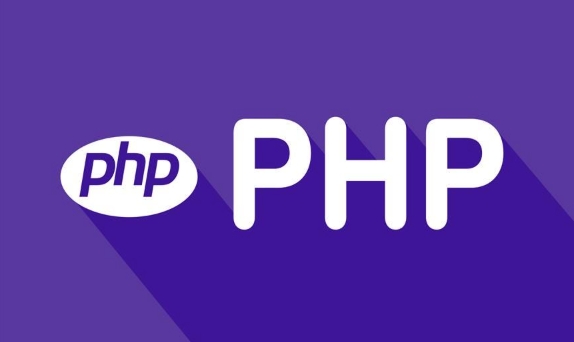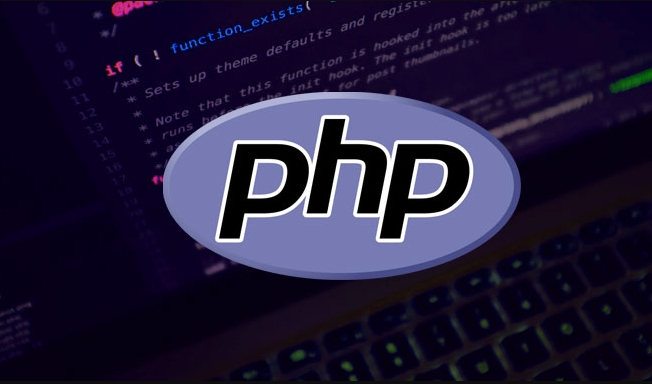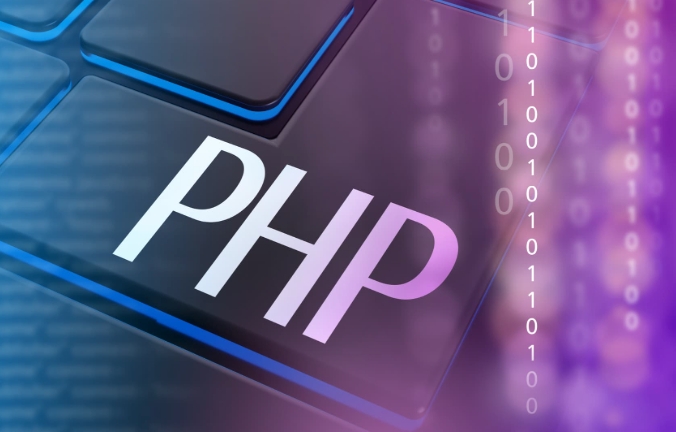Whether or not the PHP framework is necessary depends on project requirements and development habits. For medium and large projects, using frameworks can improve code quality and save development time because frameworks provide standardized structures (such as MVC mode), built-in common functions (such as database operations, routing, authentication), enhanced security (such as anti-SQL injection), and integrated auxiliary tools (such as cache, queues). 1. The advantages of the framework include: standardizing code structure, improving maintenance, accelerating development speed, enhancing security, and integrating common functions. 2. The situation where the framework is not used is: small or one-time project, high-performance requirements scenarios, and basic skills practice during the learning stage. 3. When using the framework, you need to pay attention to: high learning costs, limited flexibility, and performance overhead. It is recommended to choose a suitable framework based on the project size and personal abilities and start practicing from a small project.

Is it necessary to use the PHP framework? There is actually no absolute answer to this question, it depends on your project requirements and development habits. Simply put, frameworks can help you save time and improve code quality, but they will also bring some learning costs and limitations. If you just write a simple page or gadget, there may be no need to use a framework; but if it is a medium-sized project, not using a framework may make it troublesome to maintain later.

1. What are the core advantages of the PHP framework?
The biggest role of the framework is "standardization" and "automation". It provides a set of clear structure development methods, such as the MVC (Model-View-Controller) mode, making your code easier to read and maintain. At the same time, most mainstream frameworks (such as Laravel and Symfony) have built-in functions such as database operations, routing management, and user authentication to avoid duplicate wheel creation.

For example:
If you want to implement a login function, you must handle a lot of details such as form verification, database query, session management, etc. If you use Laravel, a lot of logic can directly call ready-made methods, saving a lot of time.
Common benefits include:

- Better code organization structure
- Provide security mechanisms (such as preventing SQL injection)
- Integrate common functions (such as cache, queue, task scheduling)
2. When can I not use the framework?
Not all projects require frameworks. If your task is simple enough, such as doing a static page display, data statistics script, or just forwarding an API interface, it can be implemented using native PHP, which is lighter and faster to deploy.
In addition, if you are a novice and just start learning PHP, it is not recommended to go to the framework at the beginning. First understand the concepts of basic syntax, functions, arrays, and object-oriented, and then transitioning to a framework will make it easier to get started.
Suitable for situations where there is no framework:
- Small project or one-time script
- Extremely high performance requirements (although the gap is usually not large)
- In the learning stage, I want to practice basic skills
3. What should I pay attention to when using the framework?
The framework is good, but not omnipotent. There are several things that are easy to ignore when using:
- Learning curve : Each framework has its own rules and terms, such as Laravel's Service Provider, middleware, Facade, etc. You may feel a little dizzy when you first come into contact.
- Limited flexibility : In some scenarios, you may want to "do it your own way", but the design idea of ??the framework may not necessarily support it.
- Performance overhead : The framework itself will do more initialization work, which will have little impact on small projects, but optimization may be required in high concurrency scenarios.
suggestion:
- Don’t blindly pursue the “most popular” framework, just choose one with complete documents and active community.
- In the early stage, you can start with small projects and learn while using them.
- Pay attention to the code structure and naming specifications, and don’t write it in a mess just because you use the framework.
Basically that's it. Whether to use the PHP framework depends on the complexity of the project and personal habits. Framework is not a must, but it can help you get less trapped, especially in projects where multiple people collaborate or long-term maintenance is done.
The above is the detailed content of is it necessary to use a php framework. For more information, please follow other related articles on the PHP Chinese website!

Hot AI Tools

Undress AI Tool
Undress images for free

Undresser.AI Undress
AI-powered app for creating realistic nude photos

AI Clothes Remover
Online AI tool for removing clothes from photos.

Clothoff.io
AI clothes remover

Video Face Swap
Swap faces in any video effortlessly with our completely free AI face swap tool!

Hot Article

Hot Tools

Notepad++7.3.1
Easy-to-use and free code editor

SublimeText3 Chinese version
Chinese version, very easy to use

Zend Studio 13.0.1
Powerful PHP integrated development environment

Dreamweaver CS6
Visual web development tools

SublimeText3 Mac version
God-level code editing software (SublimeText3)
 PHP Variable Scope Explained
Jul 17, 2025 am 04:16 AM
PHP Variable Scope Explained
Jul 17, 2025 am 04:16 AM
Common problems and solutions for PHP variable scope include: 1. The global variable cannot be accessed within the function, and it needs to be passed in using the global keyword or parameter; 2. The static variable is declared with static, and it is only initialized once and the value is maintained between multiple calls; 3. Hyperglobal variables such as $_GET and $_POST can be used directly in any scope, but you need to pay attention to safe filtering; 4. Anonymous functions need to introduce parent scope variables through the use keyword, and when modifying external variables, you need to pass a reference. Mastering these rules can help avoid errors and improve code stability.
 How to handle File Uploads securely in PHP?
Jul 08, 2025 am 02:37 AM
How to handle File Uploads securely in PHP?
Jul 08, 2025 am 02:37 AM
To safely handle PHP file uploads, you need to verify the source and type, control the file name and path, set server restrictions, and process media files twice. 1. Verify the upload source to prevent CSRF through token and detect the real MIME type through finfo_file using whitelist control; 2. Rename the file to a random string and determine the extension to store it in a non-Web directory according to the detection type; 3. PHP configuration limits the upload size and temporary directory Nginx/Apache prohibits access to the upload directory; 4. The GD library resaves the pictures to clear potential malicious data.
 Commenting Out Code in PHP
Jul 18, 2025 am 04:57 AM
Commenting Out Code in PHP
Jul 18, 2025 am 04:57 AM
There are three common methods for PHP comment code: 1. Use // or # to block one line of code, and it is recommended to use //; 2. Use /.../ to wrap code blocks with multiple lines, which cannot be nested but can be crossed; 3. Combination skills comments such as using /if(){}/ to control logic blocks, or to improve efficiency with editor shortcut keys, you should pay attention to closing symbols and avoid nesting when using them.
 How Do Generators Work in PHP?
Jul 11, 2025 am 03:12 AM
How Do Generators Work in PHP?
Jul 11, 2025 am 03:12 AM
AgeneratorinPHPisamemory-efficientwaytoiterateoverlargedatasetsbyyieldingvaluesoneatatimeinsteadofreturningthemallatonce.1.Generatorsusetheyieldkeywordtoproducevaluesondemand,reducingmemoryusage.2.Theyareusefulforhandlingbigloops,readinglargefiles,or
 Tips for Writing PHP Comments
Jul 18, 2025 am 04:51 AM
Tips for Writing PHP Comments
Jul 18, 2025 am 04:51 AM
The key to writing PHP comments is to clarify the purpose and specifications. Comments should explain "why" rather than "what was done", avoiding redundancy or too simplicity. 1. Use a unified format, such as docblock (/*/) for class and method descriptions to improve readability and tool compatibility; 2. Emphasize the reasons behind the logic, such as why JS jumps need to be output manually; 3. Add an overview description before complex code, describe the process in steps, and help understand the overall idea; 4. Use TODO and FIXME rationally to mark to-do items and problems to facilitate subsequent tracking and collaboration. Good annotations can reduce communication costs and improve code maintenance efficiency.
 How to access a character in a string by index in PHP
Jul 12, 2025 am 03:15 AM
How to access a character in a string by index in PHP
Jul 12, 2025 am 03:15 AM
In PHP, you can use square brackets or curly braces to obtain string specific index characters, but square brackets are recommended; the index starts from 0, and the access outside the range returns a null value and cannot be assigned a value; mb_substr is required to handle multi-byte characters. For example: $str="hello";echo$str[0]; output h; and Chinese characters such as mb_substr($str,1,1) need to obtain the correct result; in actual applications, the length of the string should be checked before looping, dynamic strings need to be verified for validity, and multilingual projects recommend using multi-byte security functions uniformly.
 Quick PHP Installation Tutorial
Jul 18, 2025 am 04:52 AM
Quick PHP Installation Tutorial
Jul 18, 2025 am 04:52 AM
ToinstallPHPquickly,useXAMPPonWindowsorHomebrewonmacOS.1.OnWindows,downloadandinstallXAMPP,selectcomponents,startApache,andplacefilesinhtdocs.2.Alternatively,manuallyinstallPHPfromphp.netandsetupaserverlikeApache.3.OnmacOS,installHomebrew,thenrun'bre
 Learning PHP: A Beginner's Guide
Jul 18, 2025 am 04:54 AM
Learning PHP: A Beginner's Guide
Jul 18, 2025 am 04:54 AM
TolearnPHPeffectively,startbysettingupalocalserverenvironmentusingtoolslikeXAMPPandacodeeditorlikeVSCode.1)InstallXAMPPforApache,MySQL,andPHP.2)Useacodeeditorforsyntaxsupport.3)TestyoursetupwithasimplePHPfile.Next,learnPHPbasicsincludingvariables,ech






